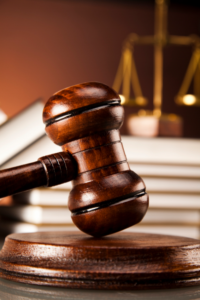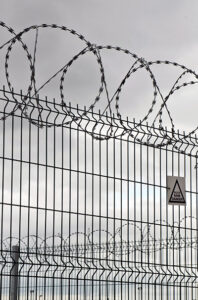Home » People and Settings » Criminal Justice
Criminal Justice
Overview of Criminal Justice
 Criminal justice is a process for enforcing the law. People who are arrested face a number of penalties. Police, lawyers, courts, and correctional systems are used during the justice process. People who break the law receive some kind of punishment. Fines, time spent in jail, and other tasks are outcomes that result from breaking the law. In the past, people who broke the law were taught new skills as a way to prevent future criminal behavior. Today, there are more “get tough on crime” policies. Many people in jail have a mental illness, or suffer from physical problems such as substance abuse. People who have developmental disabilities may also be arrested for a crime. Nationally, people with disabilities are more likely to be victims of crimes compared to people without disabilities (Bureau of Justice Statistics, 2015). Being a victim of a crime can contribute to behavior problems, especially if no victim services are provided or the crime is not prosecuted.
Criminal justice is a process for enforcing the law. People who are arrested face a number of penalties. Police, lawyers, courts, and correctional systems are used during the justice process. People who break the law receive some kind of punishment. Fines, time spent in jail, and other tasks are outcomes that result from breaking the law. In the past, people who broke the law were taught new skills as a way to prevent future criminal behavior. Today, there are more “get tough on crime” policies. Many people in jail have a mental illness, or suffer from physical problems such as substance abuse. People who have developmental disabilities may also be arrested for a crime. Nationally, people with disabilities are more likely to be victims of crimes compared to people without disabilities (Bureau of Justice Statistics, 2015). Being a victim of a crime can contribute to behavior problems, especially if no victim services are provided or the crime is not prosecuted.
Positive supports are used to help people increase education and work skills so that people can be successful when returning to the community. Sometimes, positive supports help address negative thoughts and feelings that are related to mental or physical illnesses. Some juvenile justice settings are using positive supports. Sometimes these supports are provided on an outpatient basis, without committing a person. These positive supports help improve social and behavioral skills for all of the children or youth in a facility.
Stories Across the Lifespan
The following stories describe how positive supports are used to help those in the criminal justice system with quality of life outcomes.
- Positive Behavior Intervention Supports Minnesota Correctional Facility- Red Wing (pdf)
- Criminal Justice and the Community: Impact (external web page)
- Trauma Informed Approaches and Mental Health: TAMAR, EMDR, STAIR (MNPSP web page)
- ABA and Juvenile Justice: Taylor (MNPSP web page)

Criminal Justice Resources
- Dual Diagnosis Screening and Assessment for Youth in the Juvenile Justice System (pdf)
- A Better Path, A Better Future: Three Federally-Funded Projects Supporting Community Reentry of Youth with Disabilities Leaving Juvenile Justice Facilities (external web page)
- PBIS Materials Relating to Juvenile Justice Systems (external web page)
- Justice Policy Institute Report- Models for Change: Building Momentum for Juvenile Justice Reform (pdf)
- Criminal Justice and the Community: Impact (external web page)
- Wraparound and Juvenile Justice: Making a Connection That Works (pdf)
- The Wraparound Process (external web page)
- Leve, L.D., & Chamberlain, P. (2005). Association with Delinquent Peers: Intervention Effects for Youth in the Juvenile Justice System. Journal of Abnormal Child Psychology, 33(3), 339-347. (external web page)
- Improving Transition Outcomes for Youth Involved in the Juvenile Justice System: Practical Considerations (pdf)
Positive Support Strategies for Criminal Justice
Below are some articles designed to provide important background information about topics that are relevant across lifespans and settings.
- Applied Behavior Analysis in Practice – ABA is focused on better understanding how different variables impact an individual’s behavior.
- Assertive Community Treatment History – A group of mental health professionals reviewed the mental health system to determine strategies to help people remain in their communities.
- Person-Centered Planning and Promoting Quality of Life – One way to think about person-centered practices from a systems perspective is to use a Three-Tiered Model of Positive Supports.
- PBS and Preventing Problem Behavior Using the Three-Tiered System – Considering larger organizational issues can be a helpful way to create a positive climate and prevent challenging behavior.
- Trauma Informed Approaches and Three-Tiered Systems of Positive Support – Trauma informed care approaches are implemented across education and human service organizations.
- Relationship Between Applied Behavior Analysis and Positive Behavior Support – Understand the history and current relationship between Applied Behavior Analysis and Positive Behavior Support

